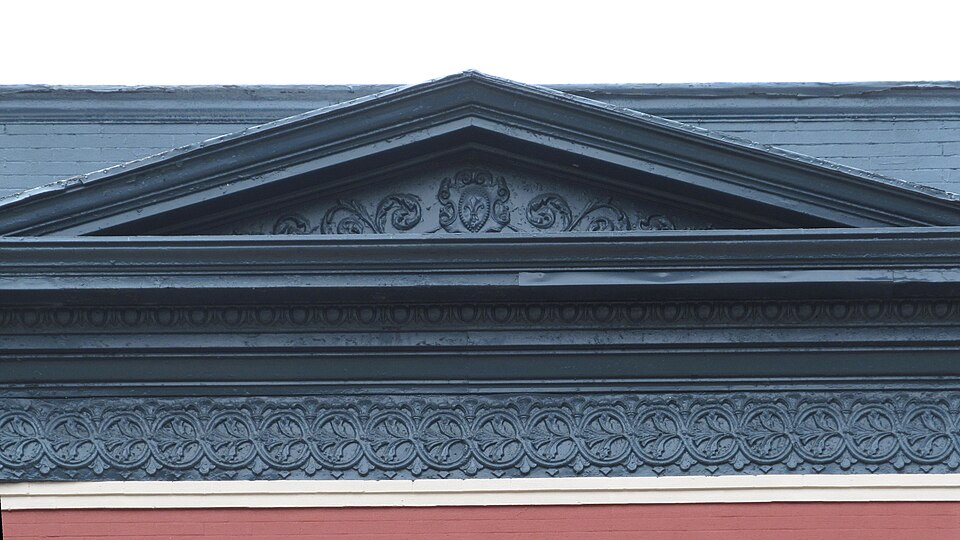
Probably built in about 1940, this was the science-fiction apartment building of the future. Except for newer windows, it has not changed much.
Comments

Probably built in about 1940, this was the science-fiction apartment building of the future. Except for newer windows, it has not changed much.

It would have been a better composition with the original ground floor, but even so the upper two-thirds are attractive. We attribute this building to William E. Snaman because it is the only apartment building in the vicinity built at the right time to match this listing:
The Construction Record, October 30, 1915. “George E. McKee, Alger street, was awarded the contract for erecting a three-story brick store and apartment building on West Liberty avenue, Dormont, for Mrs. Mary Ivol, 6268 West Liberty avenue, Dormont. Plans by Architect W. E. Snaman, Empire building. Cost $10,000.”



This striking building, which dates from about 1906, was designed by W. A. (for William Arthur) Thomas, a prolific architect and developer who is almost forgotten today. It’s time for a Thomas revival, Father Pitt thinks, because wherever he went, Thomas left the city more beautiful and more interesting.

The most attention-getting part of this building is the tower of half-round balconies in the front, and here the design is amazingly eclectic. Corinthian capitals on the pilasters and abstract cubical capitals on the columns—and then, on the third floor, tapered Craftsman-style pillars. But we don’t see a disordered mess. It all fits together in one composition.


Now, it’s possible that the interesting mixture of styles was the product of later revisions. But we are inclined to attribute an experimental spirit to Mr. Thomas. At the other end of the block…

This building is so similar that we are certainly justified in attributing it to Thomas as well unless strong evidence to the contrary comes in. But it is not identical. Here the columns go all the way up, and they terminate in striking Art Nouveau interpretations of classical capitals.

Volutes and acanthus leaves are standard decorations for classical capitals, but the proportions and the arrangement are original.


A fourth floor of cheaper modern materials has been added, but the addition was deliberately arranged to be unobtrusive, or indeed almost invisible from the street. Most passers-by will never even notice it.

Philip Friedman was busy in the years after the Second World War. He designed an incredible number of apartment buildings, and he seems to have owed his success to two things (in addition, of course, to hard work and skill in managing projects): a knack for combining modern design with more traditional elements to attract a wide range of renters, and a willingness to compromise. When the July, 1950, issue of the Charette, the magazine of the Pittsburgh Architectural Club, published a layman’s criticism of Friedman’s work, Friedman replied that he was at the mercy of his clients, and sometimes they really did throw out his drawings and stick classical columns on a modernist building. However, he did what he could. “He contends…that while his buildings are admittedly far less esthetic achievements than economic realities, many other new multiple dwellings in this area reflect no concern for esthetics whatever.”

The Crafton Ingram Apartments, originally called the Crafton Ingram Arms, are typical of Friedman’s work. They were built in about 1950. The buildings are square brick modernist boxes. But they have quoins and pediments and other Georgian details to convince the rubes that this is a high-class establishment. Originally there were four identical groups—three in Crafton and one in Ingram. Two of them have disappeared: this is the one that still stands in Ingram.



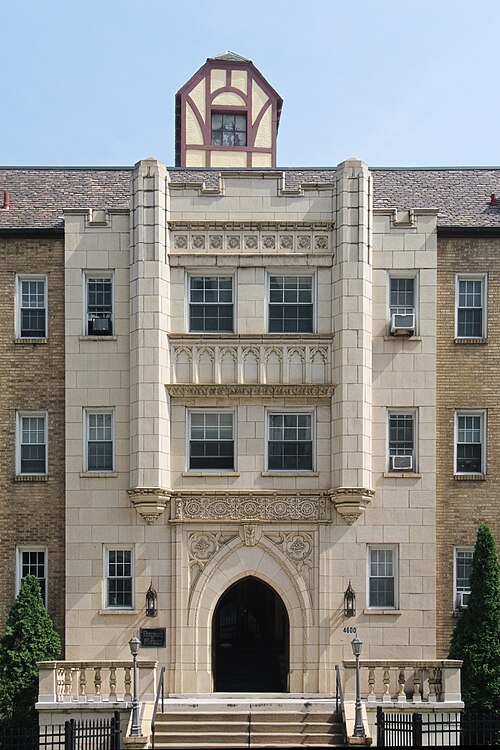
The Bayard Street face of Bayard Manor. Yes, that odd little half-timbered projection on the roof really is skewed in relation to this side of the building. That is because Craig Street and Bayard Street do not meet at exactly a right angle; the roof projection (it probably holds elevator mechanics) is oriented at right angles to every side of the building except the Bayard Street front.
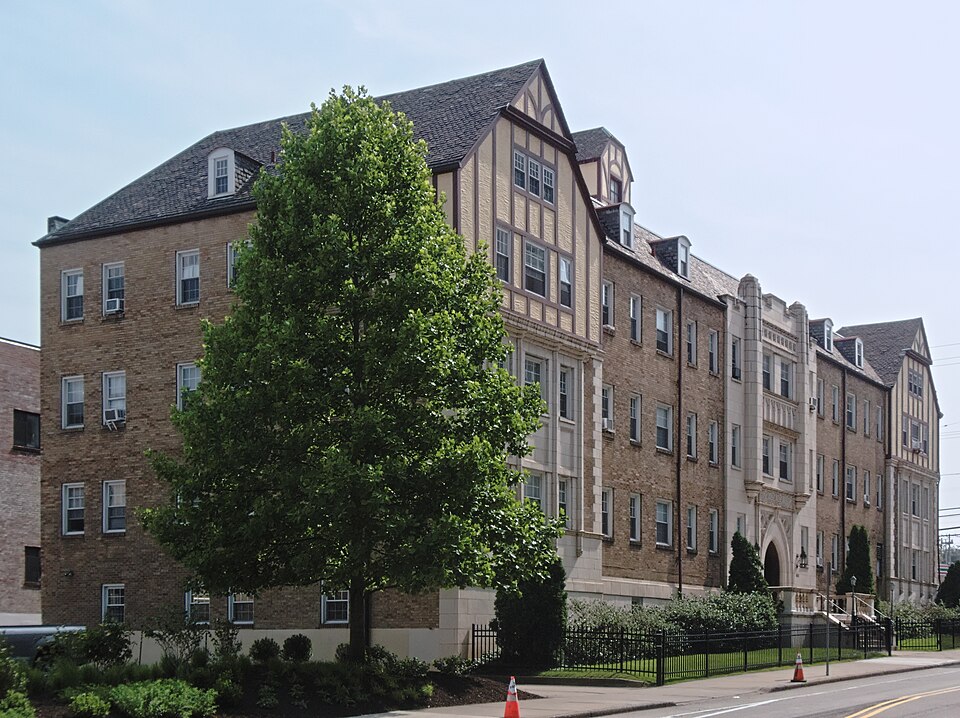
More pictures of the Bayard Street front of Bayard Manor, the main entrance, and the Craig Street side.
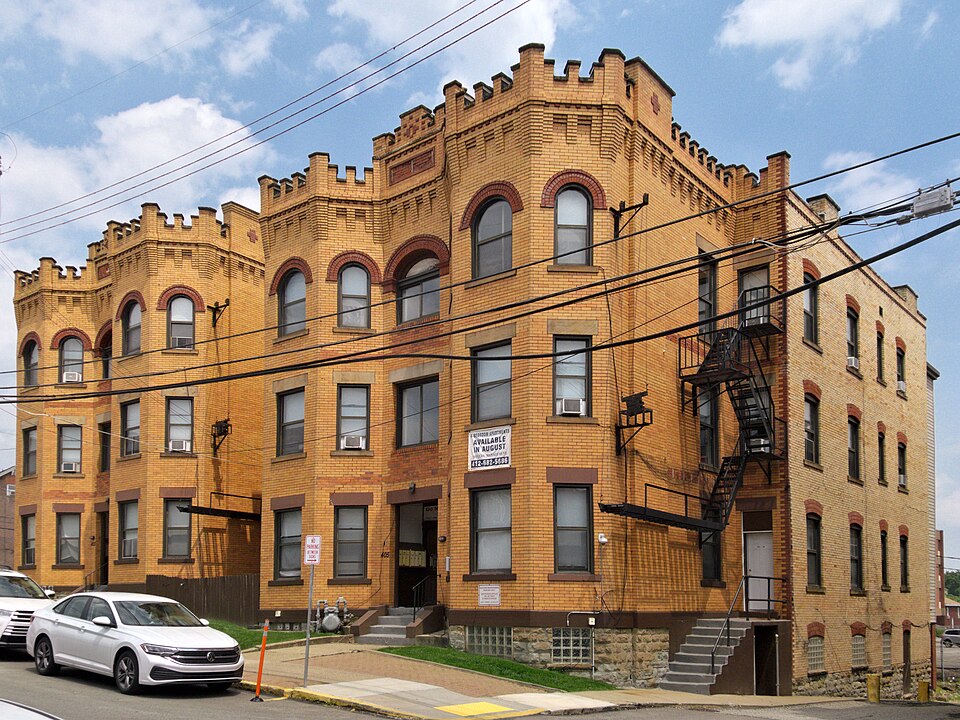
That sounds like the title for a very complicated farce, but these are actually the names of six apartment buildings in Oakland, all of which share a common style. First, on Oakland Avenue, we have Harry, George, Matilda, and Laura, which look like four buildings but are really two identical buildings, each divided in two parts. The romantic battlemented fronts give tenants the chance to imagine themselves as medieval lords and ladies fresh out of a Walter Scott novel. These fantasies were effective in selling apartments, and probably still are.
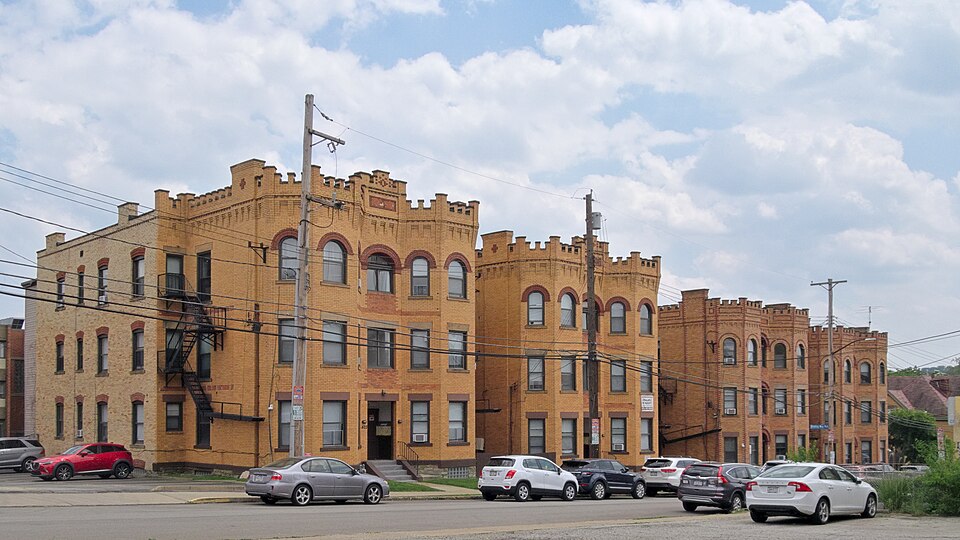
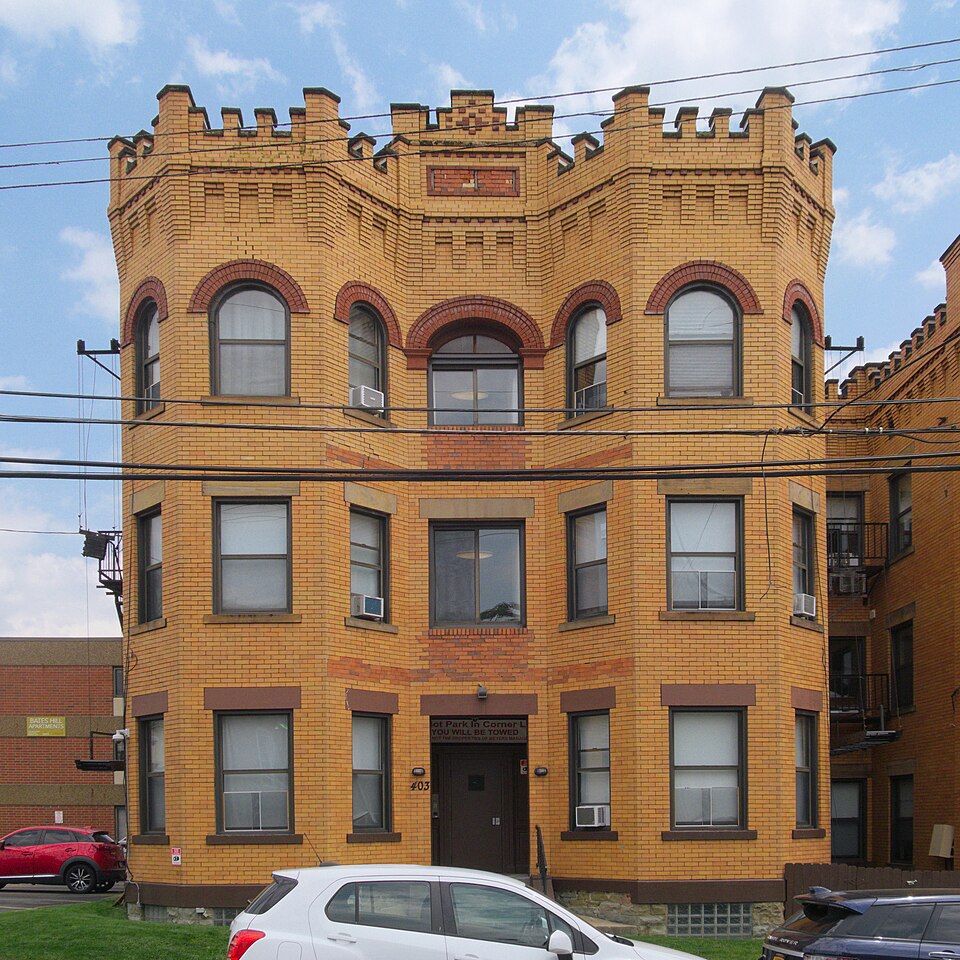
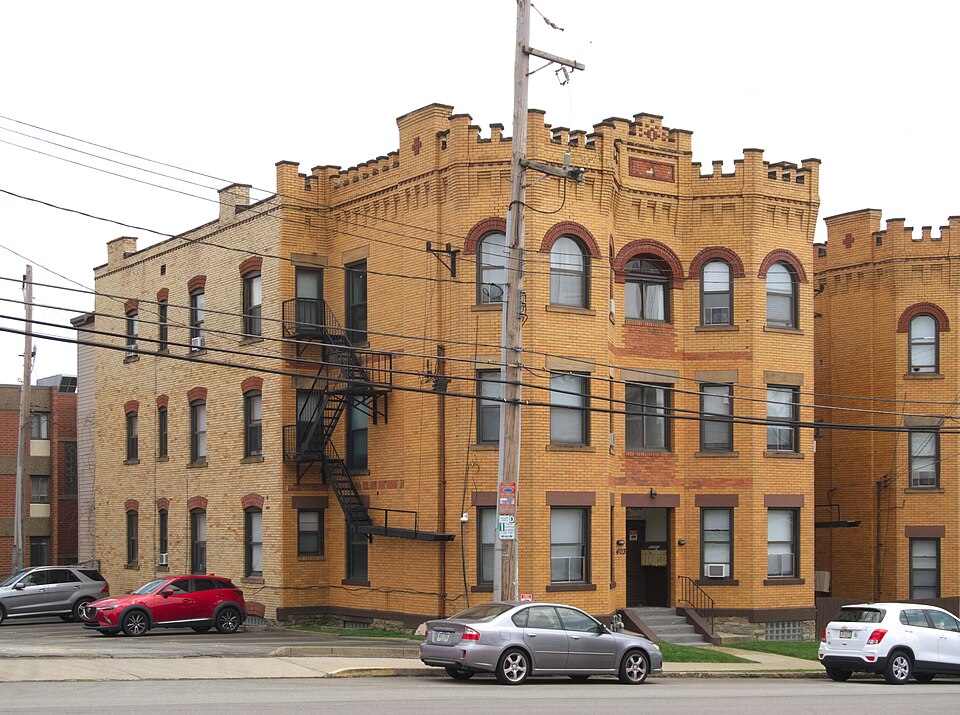
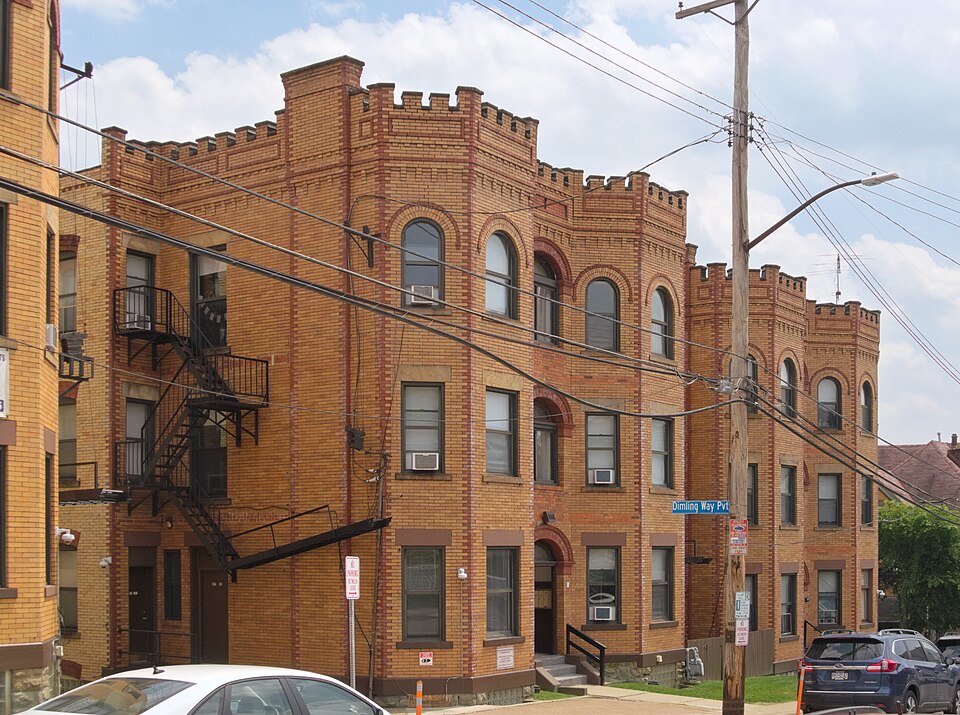
Around the corner on Dawson Street are two other buildings that share many of the same details. They had the same owner—John Dimling (note the sign for the private alley Dimling Way in the picture above)—and we can guess that they were probably drawn by the same pencil. These are called Hilda and Herbert.
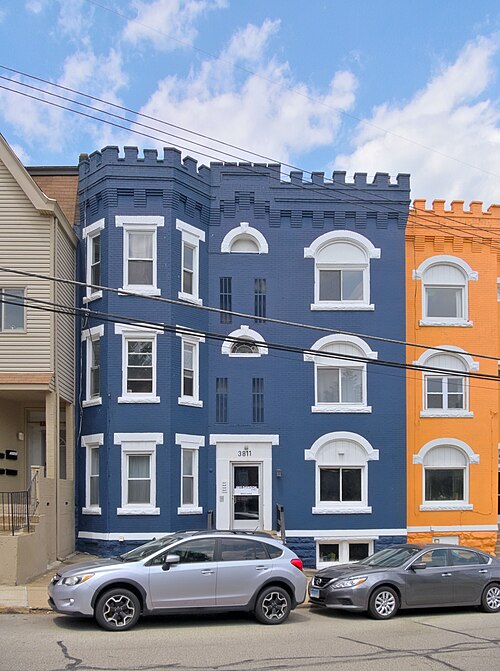
Here the architect has responded to the challenge of a lot that is not rectangular with a pair of asymmetrical designs that resemble but do not repeat Harry, George, Matilda, and Laura.

John Dimling was also the owner of the rainbow terrace on Dawson Street, and it is a good guess that the same architect was responsible for that as well. That architect was almost certainly Frederick Sauer, who is best remembered for his churches (like St. Stanislaus Kostka and St. Stephen Proto-Martyr) and his backyard whimsies, but who was very busy with all kinds of work. Father Pitt has not found these particular buildings in construction listings yet; but John Dimling was responsible for quite a bit of development in this part of Oakland, and in looking through the trade magazines for Mr. Dimling’s name, we find that, whenever an architect is mentioned, it is always and without exception F. C. Sauer during the period when these buildings went up (around the turn of the twentieth century). We therefore attribute them to Sauer until someone proves otherwise.
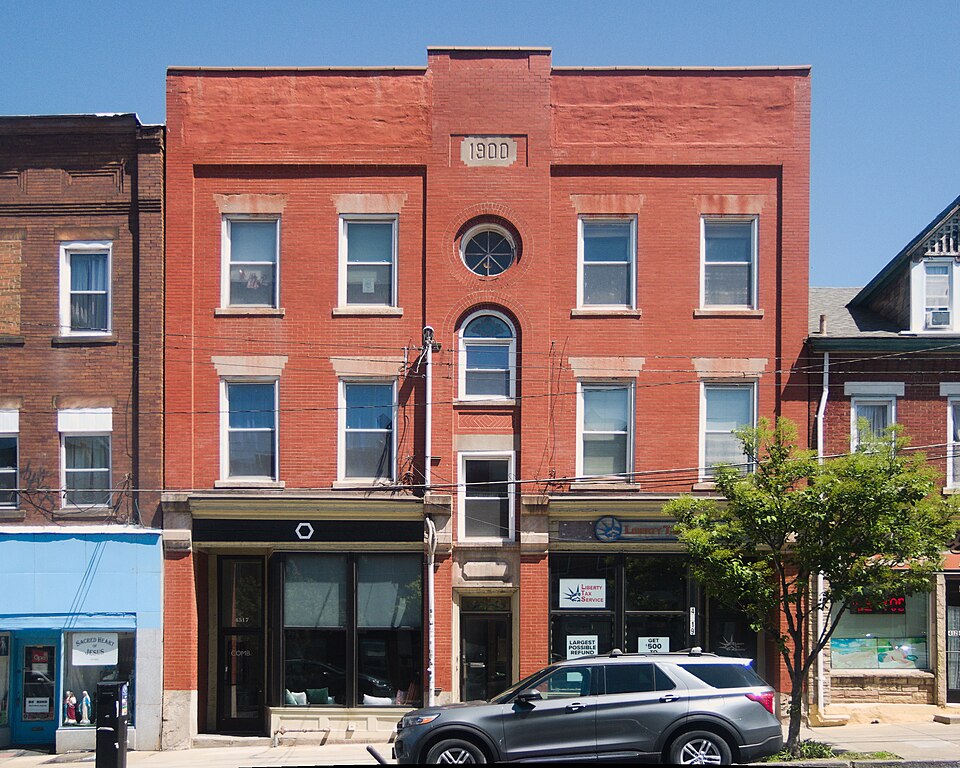
This building is probably the work of Sylvanus W. McCluskey, a Lawrenceville architect. Our source spells the name “McCloskey,” but that is within the usual limits of Linotypist accuracy. From the Pittsburg Post, October 9, 1900:
Another apartment house is to be built in the Sixteenth Ward. It will stand on a plot at Nos. 4517 and 4519 Liberty street, Bloomfield, and will be owned by Michael McKenna. It will be a three-story brick building with storerooms on the first floor. Architect S. W. McCloskey designed it and has awarded the contract for its erection to Frank McMasters. Work on it will be started at once. The building without the interior finish will cost about $15,000.
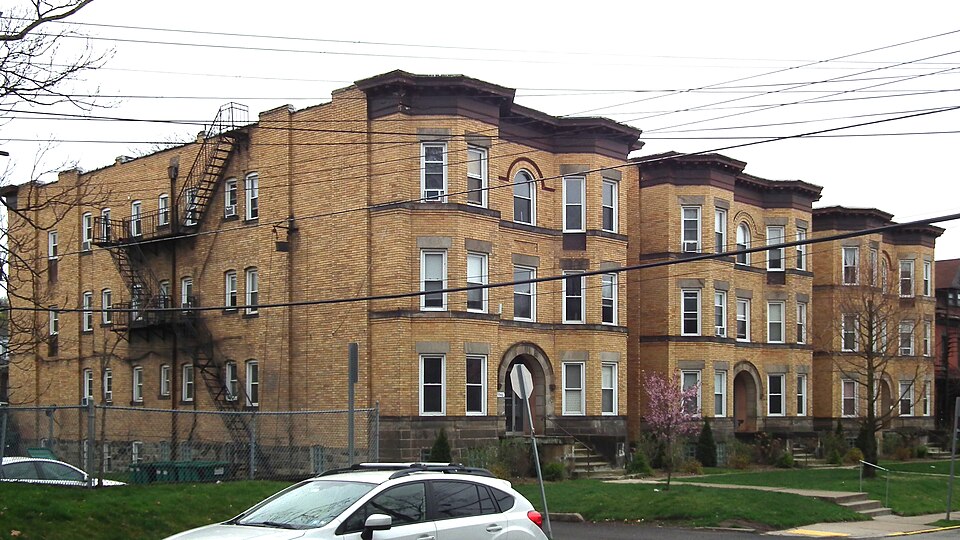
A trio of bay-fronted apartment buildings on Jackson Street. The design is not out of the ordinary, but it is a neat and elegant implementation of the ordinary. The bays, as Father Pitt likes to point out, are not mere decoration: they really do suck in the light, which is valuable for people who like natural light.
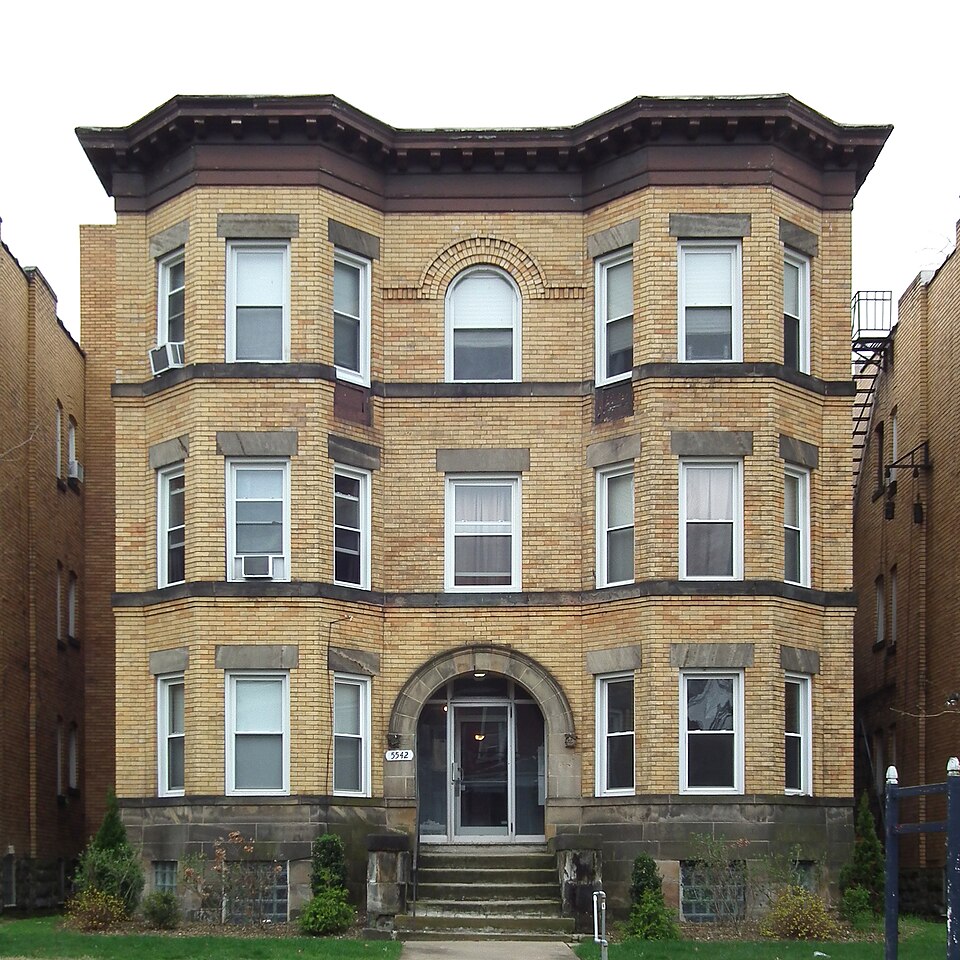
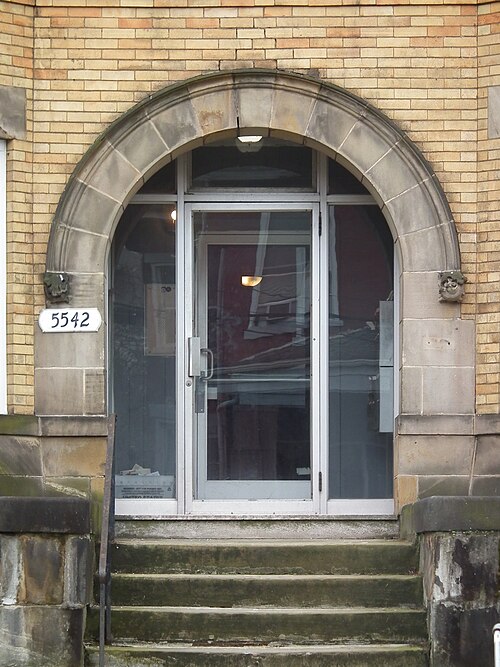
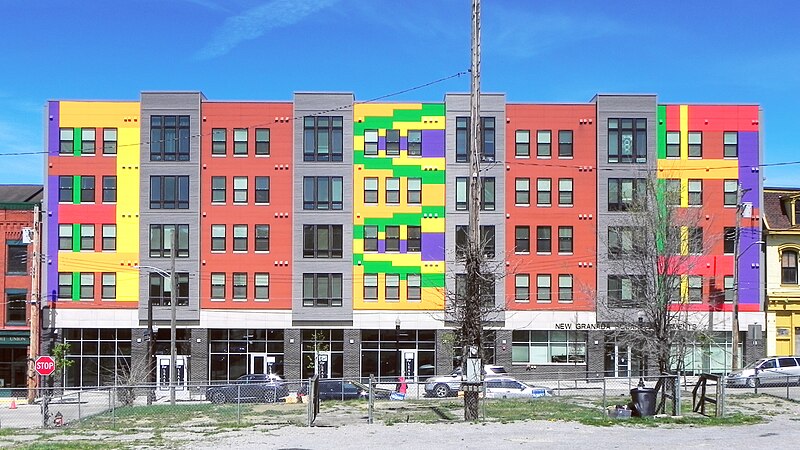
The patchwork-quilt style of architecture has been popular in the last decade, but this is by far the most colorful implementation of it old Pa Pitt has seen. The whole block that includes the New Granada has been redeveloped, and these cheerful apartments, with ground-floor storefronts, make this section of the Hill seem lively and inviting again.
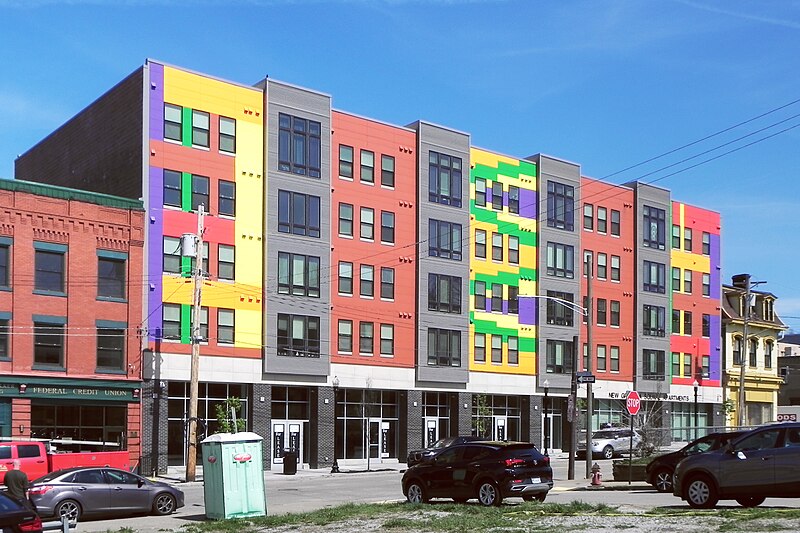

When we last saw this triple building, it was getting a fresh coat of paint. The new color scheme looks much better, and old Pa Pitt offers his congratulations to the people with taste at Mozart Management.
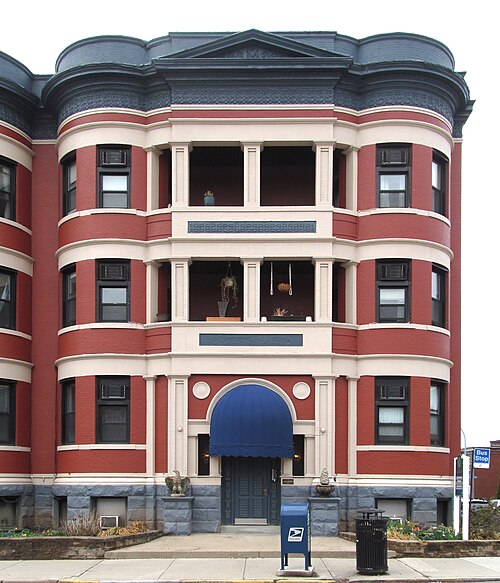
The three connected buildings were put up in 1901 as the Howard, the Delaware, and the Norfolk, and we can just barely make out the ghosts of the inscriptions above the entrances. The architect was William E. Snaman.1 The Norfolk, above, preserves the original appearance. In the other two, the balconies have been filled in to make closets, and they looked forbiddingly blank with the old paint scheme; the more artistic new scheme at least emphasizes the surviving trim.

